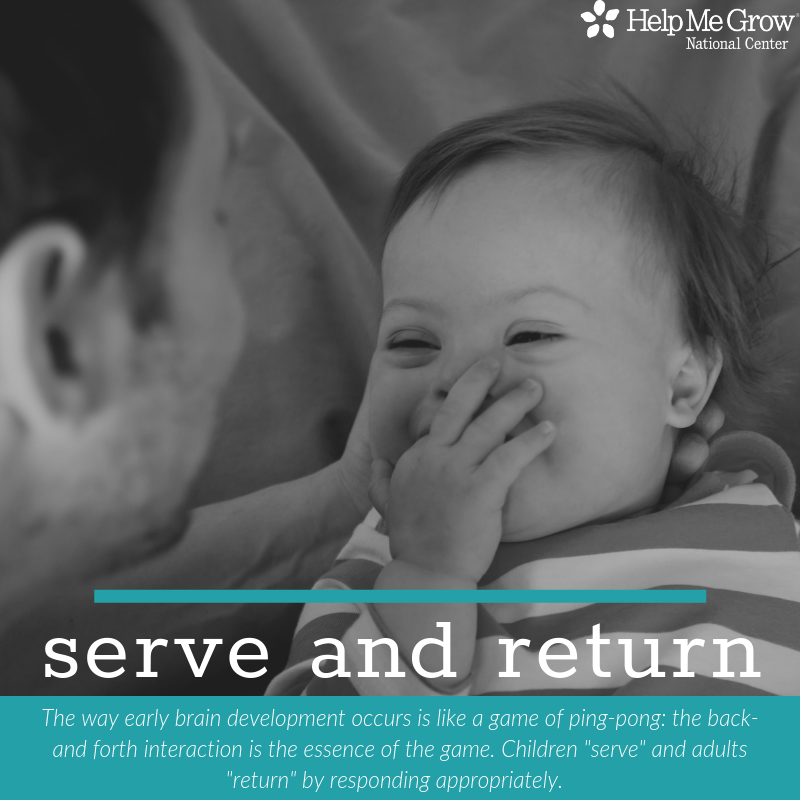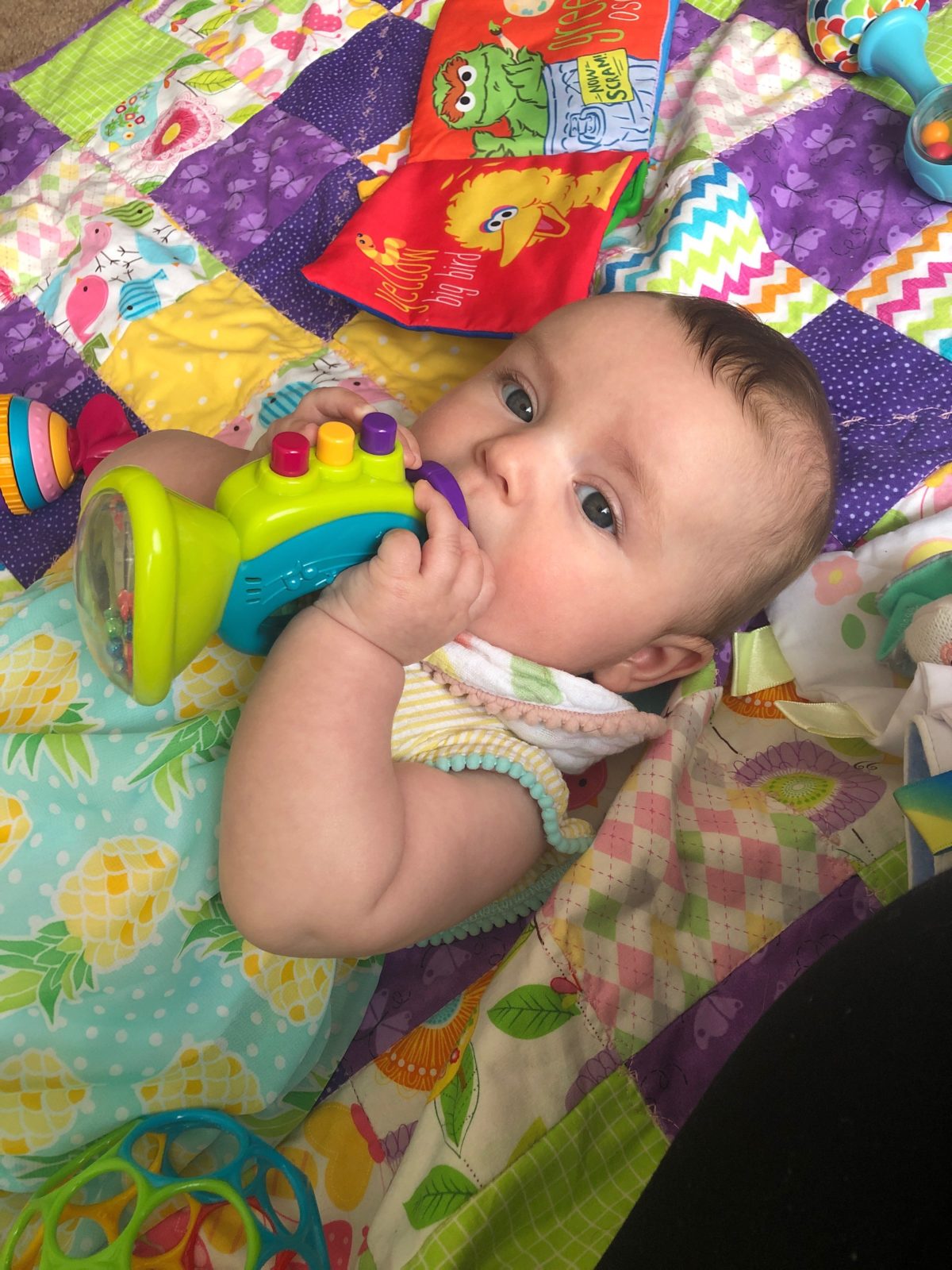We know the early years of life are critical to laying the foundation for children’s academic and life success.
One of the most powerful ways parents and caregivers can build a strong foundation for children is through back and forth interaction, a process known as serve and return, which helps to shape the developing brain. Stephanie Luczak and Sarah Zucker from the Help Me Grow National Center sit down and discuss the importance of using of serve and return in everyday interactions with children.
 SL: The development of the brain is an ongoing process, in which science shows intense activity occurs during the first three years of life. Part of that intense activity is influenced by the interactions between young children and the significant adults in their lives. Researchers at Center on the Developing Child at Harvard University, in partnership with the FrameWorks Institute, simplified this concept as “serve and return,” similar to a game of ping-pong, where back-and-forth interaction is the essence of the game: children “serve” and adults “return” by responding appropriately.
SL: The development of the brain is an ongoing process, in which science shows intense activity occurs during the first three years of life. Part of that intense activity is influenced by the interactions between young children and the significant adults in their lives. Researchers at Center on the Developing Child at Harvard University, in partnership with the FrameWorks Institute, simplified this concept as “serve and return,” similar to a game of ping-pong, where back-and-forth interaction is the essence of the game: children “serve” and adults “return” by responding appropriately.
SZ: It was actually through the partnership you just mentioned, between Harvard’s Center on the Developing Child and FrameWorks, that I first learned about serve and return. Their collaboration resulted in a clear articulation of this critical concept in learning and development, and it has been super helpful to me as a new mom of a now 5-month old baby.
SL: Not only do these interactions help build the brain, but they support a healthy attachment style. Decades of child development research has solidified the impact of early attachment on later years in life.
Thus, children with healthy, secure attachments to their caregivers have experienced many serve and return interactions by the time they enter kindergarten. As we work to build an effective early childhood system that supports every child’s healthy development, we should continue to raise awareness around the vital importance of serve and return.

SZ: With my experiences over these last five months behind me, I really couldn’t agree more with your point that serve and return needs to be highlighted in our system-building efforts. Speaking personally, serve and return is the kind of thing that seems straightforward and intuitive – if we had talked about the concept before having my daughter, I would have just expected to intuitively notice when she served to me and always return appropriately. But I’ve found it’s actually something I need to think about in order to do it well. I notice that I have a tendency to move on to a new activity or toy based more on my own sense of when something should have lost its interest, rather than watching for my daughter’s cues that tell me she’s done. It’s incredible how long her learning brain can linger on a single picture in a book or how many times she will want to try to put the same toy in her mouth! Serve and return is a really useful framework for me to stay present with her and encourage learning at her own pace.
SL: We also know that environments can help support serve and return. Given what we know about the importance of serve and return, our state and federal policies should be reflective of creating supportive environments to help maximize opportunities for serve and return. For example, home visiting, parenting support, high-quality child care, and paid family leave are crucial to building a strong foundation.
SZ: Emphatic yes. Despite the common sense that very young children are always and only in the company of their immediate family, our kids actually interact with all sorts of people and places. It’s incredible to think about the positive impact that would result if all of the people and places that touch our children’s lives were knowledgeable about and practicing serve and return.

